
Fencing Options at Home: What You Need to Know
Last Updated: Apr 7, 2025"A good fence makes for a good neighbor," or so the saying goes. For the millions of homeowners who are lucky enough to enjoy a bit of property, properly fencing in your yard might be high on your list of priorities. According to market analysts, the fencing industry in the United States comprises almost 50,000 companies. It has a market size of over $7 billion. If you are thinking about building (or updating) a fence for your yard, knowing the pros and cons of different types of fencing options is very useful. This research can help you find a durable, aesthetically pleasing barrier to your yard that can also add sustainability features to your property. Below, Rise looks at why fencing might be a good idea for individual homeowners and the advantages and drawbacks of different types of fencing options on the market today.
Table of Contents
- Is a Fence a Good Investment?
- How Much Does It Cost To Build A Fence?
- What Are Commonly Available Fencing Options?
- What is a Wood Fence?
- What Are the Advantages of Wood Fences?
- What Are the Disadvantages of Wood Fences?
- How Much Do Wood Fences Cost?
- How Long Do Wood Fences Last?
- What Is Block Fencing?
- How Much Do Block Fences Cost?
- What is Metal Fencing?
- How Long Do Metal Fences Last?
- How Much Do Metal Fences Cost?
- What is Vinyl or Composite Wood Fencing?
- How Long Does Composite Wood Fencing Last?
- What Are Living Fences?
- What Are The Best Options in Fences for Animals?

Is a Fence a Good Investment?
Maintaining a stable and respectful relationship with your neighbors is key to a healthy community and happy homeownership. Open boundaries between homes and properties, in many cases, can be mutually beneficial for neighbors. In one article, Rise took an in-depth look at the advantages that come with shared yards.
However, in other cases, exposed properties without any fencing or other barriers can cause concern. The Bureau of Justice Statistics (BJS) estimates that around 3.7 million households suffer burglaries annually. Of those burglaries, well over half occur when someone from the family is physically present at the house. Fencing around a home or yard is the first line of defense against uninvited intruders. Though home security networks are growing more sophisticated every year, an old-fashioned fence might act as a deterrent to burglars lurking in the neighborhood.
Certain types of fences can also help to increase the value of your home and property. Though curbside walls might reduce the "curb appeal" of your home (especially if you are trying to sell), fenced-in backyards often increase overall property value. One leader in the home fencing industry estimates that solid fences, made from wood, concrete, or cast iron, might garner up to 50 percent of the cost of materials and installation upon the home's resale.
A good fence can keep children and pets safely inside the boundaries of the yard. This consideration is significant for households located near busy streets. Natural fencing options, which we will explore in more detail below, can also be designed to be a part of a regenerative home and landscape.
A fence is also an excellent way to establish healthy boundaries and limitations with neighbors that you might not get along with very well. A recent survey by Rent.com found that only about 30 percent of homeowners made strong friendships with their neighbors. Though you should always try to maintain cordial relationships with those who live near you, a quality fence is also a great way to keep your family's privacy when you don't know your neighbors all that well.

How Much Does It Cost To Build A Fence?
The cost to install a fence around your yard averages between $13 and $25 per linear foot. Most homeowners can expect to spend between $1,580 and $3,418 for a fence to surround their yard. Almost every fencing type will be a significant financial investment (and time investment if you plan on building it yourself). So, you should always thoroughly explore the pros and cons of the different fencing materials available.

What Are Commonly Available Fencing Options?
What is a Wood Fence?
Wood fencing is perhaps the quintessential idea of a yard fence. From the classic white picket fence in the front yard to the 9-foot tall privacy fence in the back yard, wood has long been used to delineate property boundaries.
What Are the Advantages of Wood Fences?
wood is a natural material. Because the wood captures carbon as it grows as standing trees, wood fencing is a carbon-neutral building material. Compared to other fencing alternatives, wood fencing is also generally easy to source. It comes in various heights and styles and is significantly less expensive than other fencing options.
What Are the Disadvantages of Wood Fences?
Wooden fencing is prone to rot if the wood is not treated correctly. The most inexpensive fencing options sold commercially are mostly made from pine or other softwoods. These fencing options are pressure-treated copper, chromium, and arsenic (CCA) to limit rotting and decomposition. These chemicals, over time, will leach into the surrounding soil, contaminating the earth. If you use CCA-treated lumber for fencing, you should never plant a garden with edible crops near the fence posts.
How Much Do Wood Fences Cost?
Wood fencing can be as cheap as $5 per linear foot. With a post hole digger and hammer and nails, most homeowners should install a wood fence independently, reducing the installation cost.
How Long Do Wood Fences Last?
Even if the wood is treated, softwood fence posts will generally only last between 10 and 20 years before needing to be replaced. Opting for certain hardwoods might be more expensive, though certain wood types can easily last for 40 years or more. Depending on your region, consider black locust or alder wood for a more durable and long-lasting wood fence.
What Is Block Fencing?
Concrete block masonry walls are durable, long-lasting, and dependable as a fencing option for your yard. When built correctly, these types of fences will easily last a lifetime. These walls are also fireproof and can help to protect your home from fires by providing a fireproof boundary around your property. They are also extraordinarily soundproof and limit noise pollution from traffic, industry, or noisy neighbors.
How Much Do Block Fences Cost?
Unfortunately, block fences are costly. A traditional brick masonry fence will cost you at least $35 per square foot, and cinder block fences will probably be more expensive than that. If you want to use the fence for privacy or as a noise deterrent, building a high enough concrete barrier will probably cost you tens of thousands of dollars. Concrete walls are made from cement, which is the source of around 8 percent of the total worldwide carbon dioxide emissions.
Money Saving Home Improvement Products
Shop home improvement products that directly contribute to saving money through their use, whether through energy savings or lower maintenance costs.
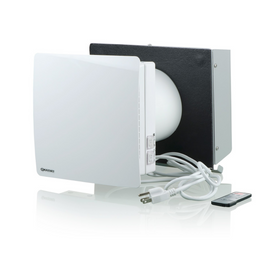
Vents TwinFresh Comfo RA1-50-2 Ductless Energy Recovery Ventilator
Vents
In Stock
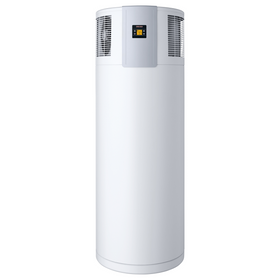
Stiebel Eltron Accelera 300 E Heat Pump Water Heater
Stiebel Eltron
Out of Stock
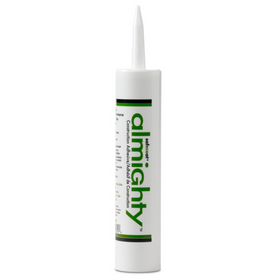
AFM Safecoat Almighty Adhesive Case of 12
AFM Safecoat
In Stock

Emporia Classic Level 2 48 AMP EV Charger UL Listed
Emporia
In Stock
2 Colors

Stiebel Eltron CON 300-2 Premium Wall-Mounted Convection Heater - 202030
Stiebel Eltron
Out of Stock
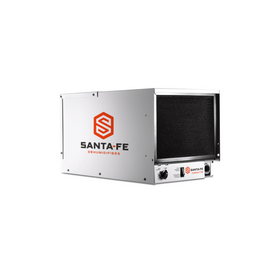
Santa Fe Compact70 Dehumidifier - 4044110
Santa Fe
In Stock
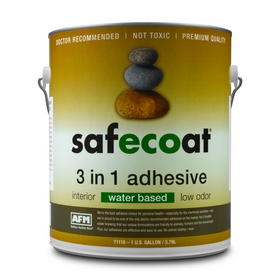
AFM Safecoat 3 in 1 Adhesive
AFM Safecoat
In Stock

Stiebel Eltron DHC-E 8/10-2 Plus Point-of-Use Electric Tankless Water Heater - 202145
Stiebel Eltron
In Stock
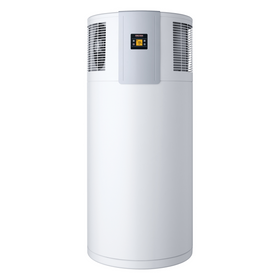
Stiebel Eltron Accelera 220 E Heat Pump Water Heater
Stiebel Eltron
In Stock

Stiebel Eltron CON 150-1 Premium Wall-Mounted Convection Heater - 202026
Stiebel Eltron
In Stock
What is Metal Fencing?
The most common type of material used for metal fencing is aluminum. One of the advantages of this type of fencing is that they require almost no maintenance once installed. Galvanized and powder coating help to prevent and avoid corrosion and rust.
How Long Do Metal Fences Last?
Galvanized steel fence posts will last between 50 and 75 years before rusting in the soil. Powder-coated aluminum fencing doesn't rust like other metals, and will easily last for upwards of half a century. Metal fences are also sturdy and perform well in areas where high winds and different types of severe weather are common.
How Much Do Metal Fences Cost?
Metal fences are an expensive upfront investment, though their durability may make them cheaper over the long run. Homeowners can expect to pay up to $60 per linear foot for a high-quality aluminum fence, and installation costs might increase that number substantially. Both steel and aluminum have incredibly high embodied energy footprints, though many manufacturers incorporate large amounts of recycled metal content into their fencing options.
What is Vinyl or Composite Wood Fencing?
For homeowners looking for a relatively inexpensive and easy-to-install fencing option, both vinyl and composite wood fencing can be attractive options. Both vinyl and composite wood are low maintenance and tend not to shrink, crack, or warp as much as wood fencing. Both of these options also are practically immune to insect and mold damage.
How Long Does Composite Wood Fencing Last?
Composite wood fencing products can discolor over time due to exposure to the sun's UV rays. Vinyl fencing is made from plastics and comes with a high embodied energy footprint. Also, most of these fencing products only come with a 20-year warranty and will most likely need to be replaced.
What Are Living Fences?
One essential permaculture design principle is always to replace mechanical elements with biological elements within a landscape design. Whereas all mechanical, synthetic, or otherwise non-living materials will degenerate and fragment over time, living systems regenerate throughout time. They are more durable and longer-lasting. In the specific case of fencing, even the best concrete fence will eventually crumble and fall. Living fence systems made from trees and shrubs, on the other hand, will continue to grow and strengthen over time.
Another benefit of living fences is that they provide several "functions" within the landscape, another important permaculture principle. Besides offering safety and privacy for your yard, living fences can provide food and fuel for your family, habitat for wildlife such as birds and important pollinator insects while also serving as a windbreak that protects your home from severe weather.
Several species of trees and shrubs will re-sprout and vigorously grow after being cut down. The ancient land management technique, known as coppice forestry, essentially allows homeowners to create living hedges around their homes. These can also provide an enormous amount of firewood to fuel a wood stove throughout the winter.
The only real downside with living fences is that they do require several years to establish. Also, if hedges are not maintained, they can grow prohibitively tall, over-shading your home.
What Are The Best Options in Fences for Animals?
Any fencing mentioned above can be used to fencing in different types of animals you keep on your property. Smaller pets such as dogs and cats will be restrained by almost any fence as long as individual posts are not distantly placed. For larger animals such as sheep, horses, or other types of livestock, wood fencing is generally the best option for smaller properties. For larger acreage, barbed wire fencing or even single-wire electrified fencing is a cost-effective strategy worth exploring.
Tobias Roberts
Tobias runs an agroecology farm and a natural building collective in the mountains of El Salvador. He specializes in earthen construction methods and uses permaculture design methods to integrate structures into the sustainability of the landscape.

